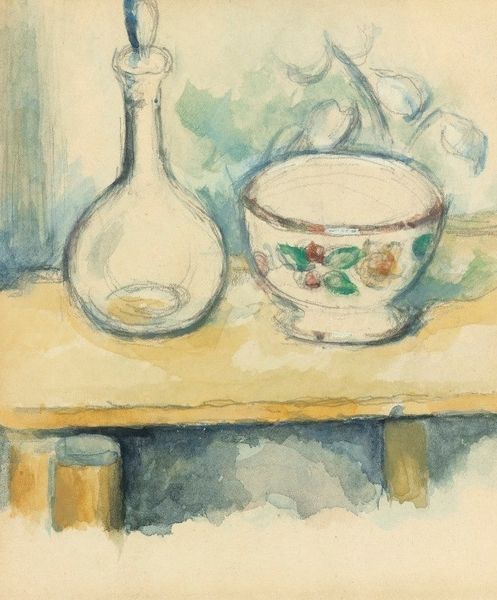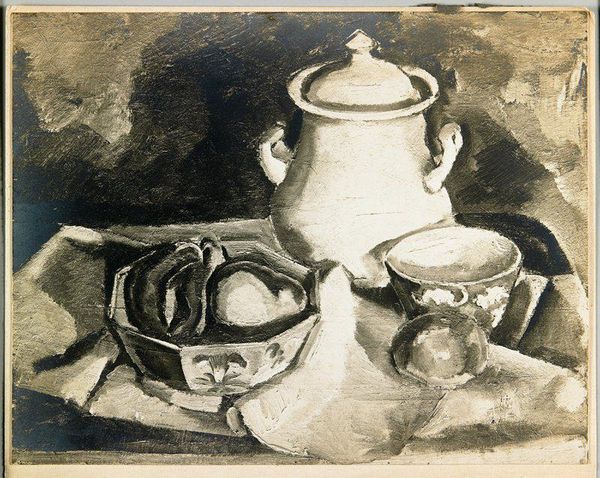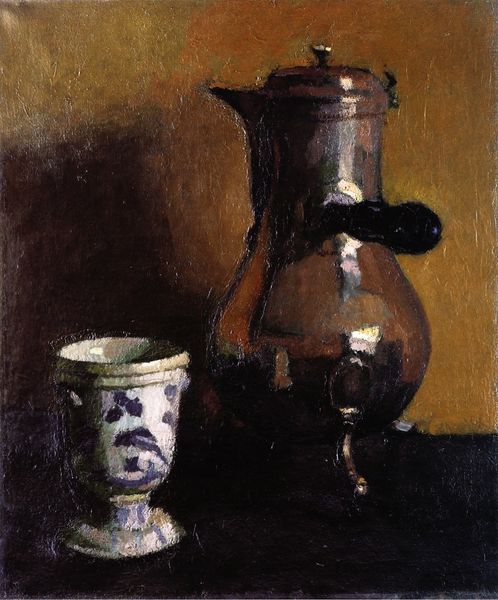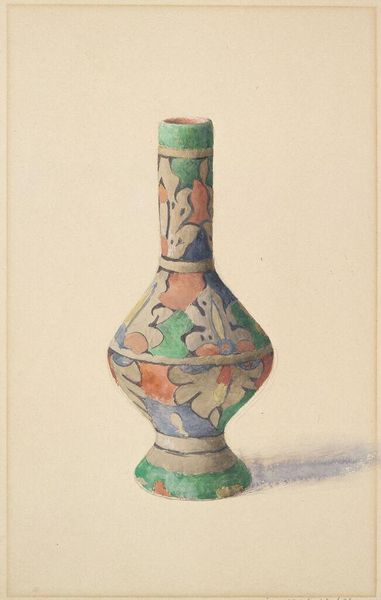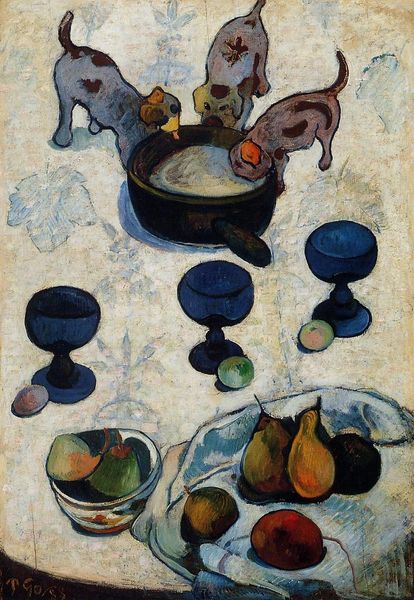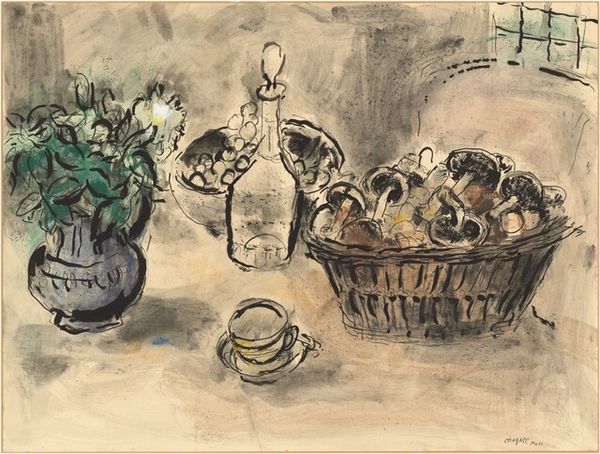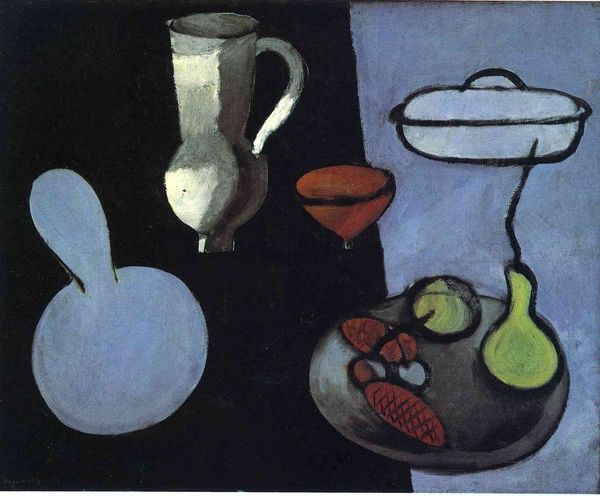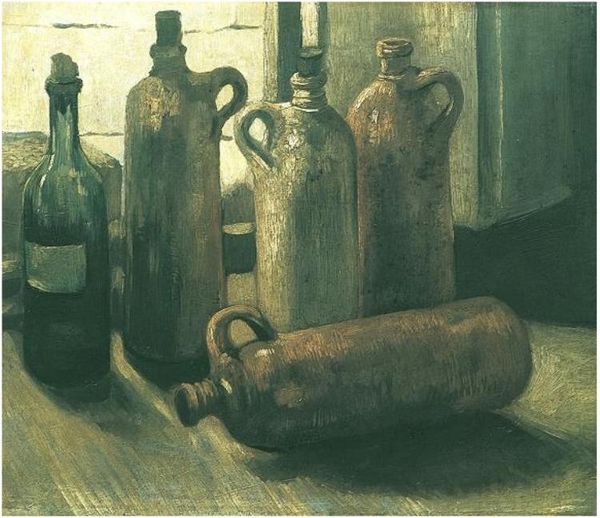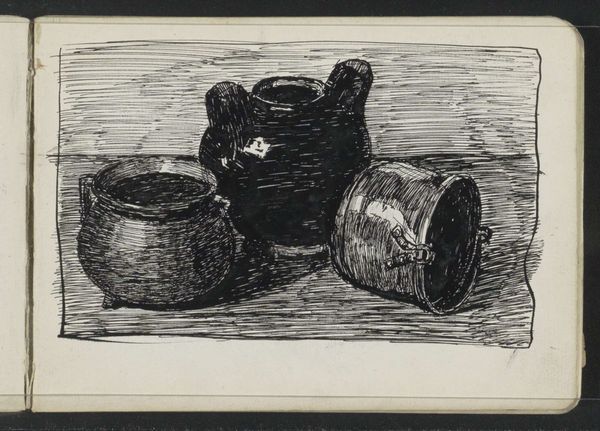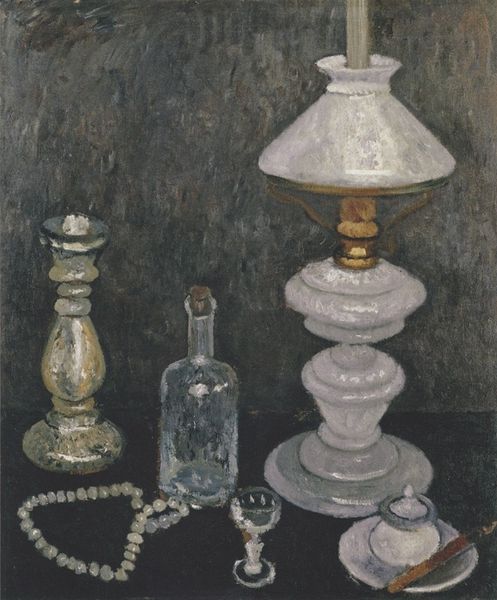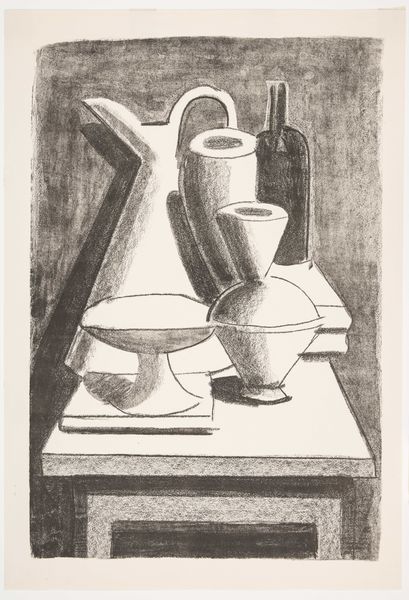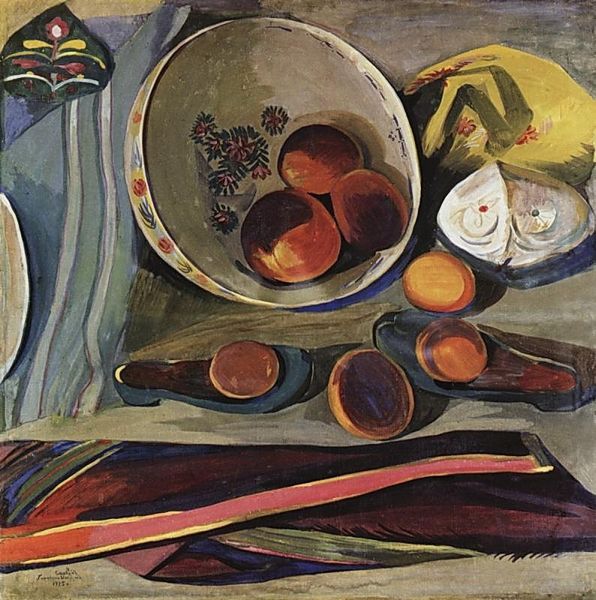
drawing, coloured-pencil, paper
#
drawing
#
coloured-pencil
#
pencil sketch
#
paper
#
coloured pencil
#
expressionism
#
watercolour illustration
Copyright: Public domain
Editor: This is "Ceramics," a colored pencil drawing by Egon Schiele from 1918. I find it striking how Schiele captures such varied forms and textures with what seem like simple strokes. What stands out to you in this piece? Curator: The symbolism embedded in everyday objects is fascinating, isn’t it? Here, we have these vessels, each a container, holding something—water, wine, perhaps secrets. Consider how the placement itself tells a story. Notice the central, almost vulnerable positioning of the yellow pitcher? Editor: It does seem like it's being supported, almost protected, by the others. Curator: Precisely. In Expressionism, objects aren't merely depicted; they're imbued with feeling, with psychological weight. Given that this was created in 1918, amidst the upheaval of World War I, what do you think these imperfect, grouped ceramics might represent in that historical context? Editor: Perhaps a sense of fragility, but also of community, holding together in the face of hardship? Curator: Exactly. The flaws - the chip on the yellow pitcher, for instance - become emblems of resilience, reflecting the human condition during wartime. The objects remind me of reliquaries; even something broken has an important story. The collection tells another one. It might speak to Schiele's emotional state, or even be an experiment to find relationships through varied patterns, like we do in life. Editor: I never considered the 'holding together' aspect so literally before. It is amazing to consider everyday things in a symbolic manner that can speak volumes about what's going on during historical times. Curator: Absolutely! It is rewarding to think through art in this way. Now, when you see a still life, perhaps you'll ponder not just *what* is depicted, but *why*.
Comments
No comments
Be the first to comment and join the conversation on the ultimate creative platform.
